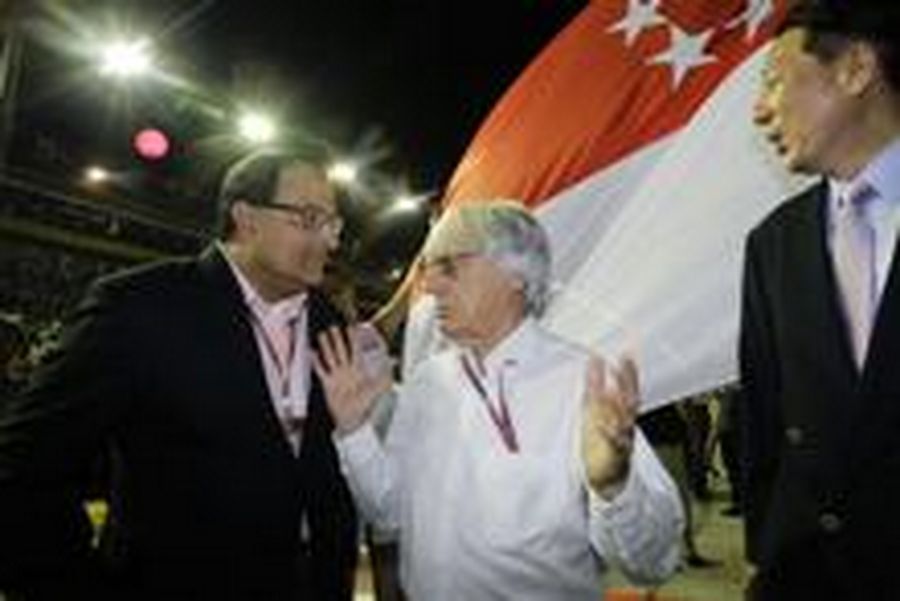
Source: Reuters/Tim Chong
Formula One commercial supremo Bernie Ecclestone speaks with S Iswaran (L) and Singapore Deputy Prime Minister Teo Chee Hean before the 2011 Singapore F1 Grand Prix. Singapore imposes an extra 30% tax on hotels to help cover the cost of hosting the race
The securities will comprise a share in the business, as well as a loan note that carries a 10% coupon and falls due on November 24 2060. Formula 1 has an existing shareholder loan of US$4bn and the stapled loan note will give the IPO investors a share in those repayments.
The structure is unique in Asia, although some Australian companies, such as Envestra, SP AusNet and Spark Infrastructure, are listed as stapled securities. In such a structure, shares are stapled to either a loan note, unit of a finance trust or unit of an investment trust.
In Formula 1’s case, the format will help the company minimise its tax bill. Interest related to shareholder loans is tax deductible. The structure is often used in companies that private-equity firms own. Formula 1 has a tax rate of less than 4%.
The loan is actually a payment-in-kind instrument and no cash interest payments are required. Instead, the interest accrues to the principal, which means, on paper, the debt will grow, making it difficult to compare the company’s financial metrics with other peers.
Alongside their portion of the loan note, Formula 1’s IPO investors will get a share of the equity. Formula 1 will return around 80% of the total benefit from the stapled security to investors each year, but has yet to specify the form this will take. This means the annual distribution could be a cash dividend payment related to the shares or a cash payment – either of accrued interest or principal – on the loan.
The cash returns will be the same in either form, and the annual distribution for 2013 has been estimated at 3.4%–4.7%. The 2013 P/E multiple is estimated at 18.1–24.9. The Singapore Exchange has confirmed that the securities will be classified as equity. The two components of the stapled security cannot be separated and traded individually.
Extra payments
Formula 1 pays out about 63% of Ebitda to teams through a prize fund, according to premarketing material IFR has seen. That figure includes payments of hundreds of millions of dollars each year to a small number of teams, regardless of their success on the track.
Ferrari also receives a further payment of the greater of US$62.2m, or 5% of the prize fund, for being the longest-standing team in Formula 1
Under the terms of the Concorde agreement with the race teams, which runs until 2020, certain teams receive extra payments for criteria like “heritage and longevity”, on top of payments for their rankings in the top 10 of the constructors’ championship. McLaren, Ferrari and Red Bull share an additional pot of US$100m, or 7.5% of the total prize fund, whichever is greater, as a reward for being the three most successful teams in the past four years, with their shares dependent on their relative rankings.
Ferrari also receives a further payment of the greater of US$62.2m, or 5% of the prize fund, for being the longest-standing team in Formula 1. There is a further US$65m of fixed payments, including payments to Red Bull for winning back-to-back constructors’ championships and more than 50% of races in two consecutive seasons, as well as other “heritage payments”, and money for the two teams that finish outside the top 10.
The material also reveals that the Singapore Tourism Board pays 60% of the US$120m annual cost for hosting the race in the city state, with the race promoter covering the rest. Tourism brings in an additional US$80m during the race, and Singapore also imposes an additional 30% tax on hotels during that period to help cover the cost.
